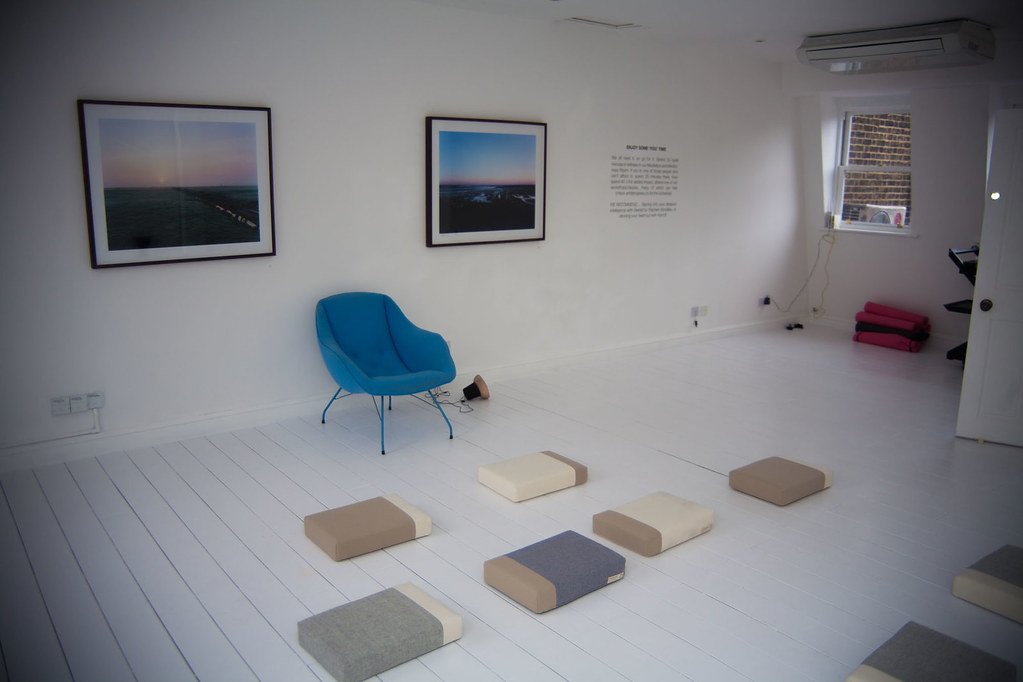Living Room
11 Meditation Room Ideas
The goal of constructing a meditation room is to create an environment that promotes balance, clarity, and stillness. These 11 suggestions provide imaginative and considerate methods to turn your space into a private haven, whether you’re dealing with a specific room or a comfortable nook.
Every idea is designed to promote mindfulness and inner serenity, from light-filled areas and minimalist layouts to earthy color schemes and organic textures. Learn how to create a calm haven that promotes daily introspection and mental health by combining comfort, nature, and thoughtful design.
How to Design a Meditation Room
Start by selecting a peaceful, uncluttered space in your home where distractions are minimal. Choose calming wall colors such as soft greens, muted blues, or warm neutrals. Establish a meaningful focal point—this could be a piece of artwork, a statue, or a small altar. Incorporate cozy elements like cushions, throws, or floor seating to create comfort. Add touches of nature with houseplants or natural textures, and personalize the space with items that inspire peace—like candles, essential oils, or positive affirmations.
1. Get Cozy With a Floor Sofa
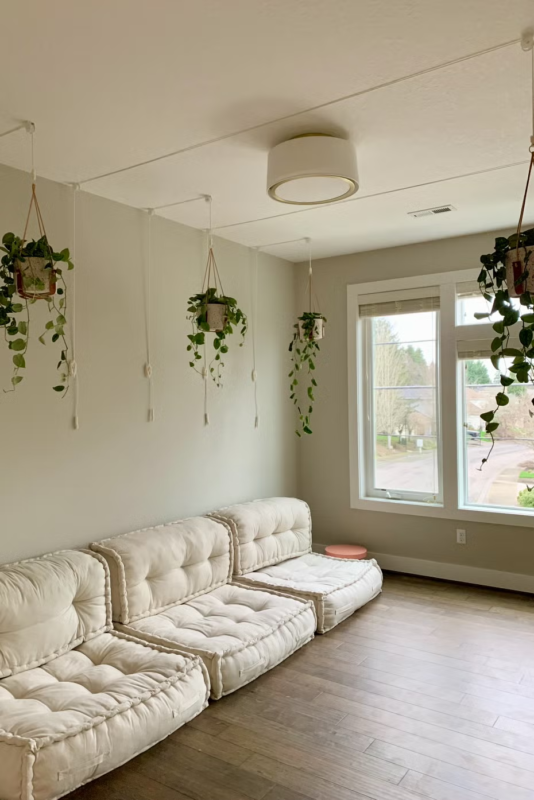
Meditation doesn’t always require sitting cross-legged on the floor. Low, floor-level seating such as a sofa or oversized cushions can offer comfort without compromising the meditative vibe. In one soothing setup, the designer used soft green walls and trailing houseplants to create a refreshing, serene retreat.
2. Keep It Light and Bright

A neutral color palette—think whites, grays, and light tans—creates a clean, open atmosphere. Letting in plenty of natural light enhances the calming energy of the room. Soft floor furnishings like pillows and blankets invite moments of rest and mindfulness throughout the day.
3. Make It Boho
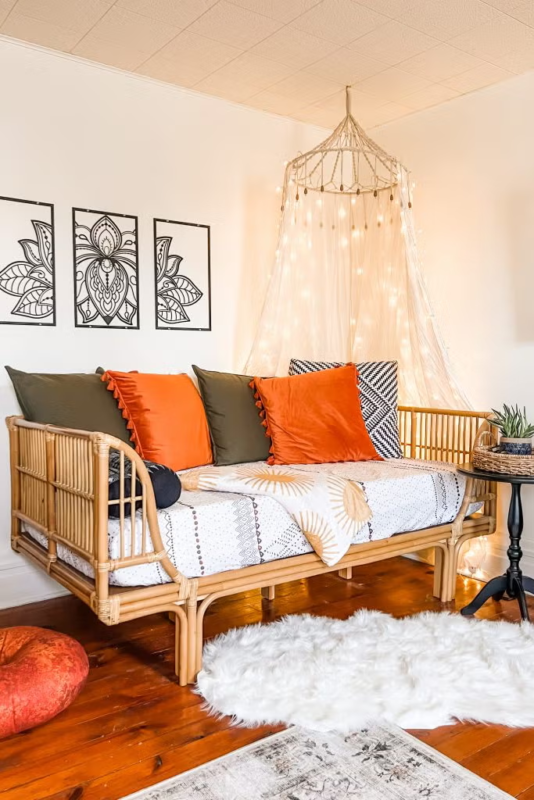
A bohemian approach to meditation spaces invites creativity and comfort. Picture a rattan daybed layered with soft cushions under a canopy of string lights. Crystals, books, and plants add character and make the space feel intentionally personal and grounding.
4. Draw Inspiration From Nature

Nature can be a powerful influence in designing a calming space. Use shades of green to evoke feelings of balance and tranquility. One room even features a sculptural ceiling installation made from fabric leaves, paired with abundant greenery for a fully immersive natural escape.
5. Stick to Calming Colors

Paint tones like off-white, beige, or soft blues create a subtle and restful environment. Incorporating cool, muted shades can help reduce stress and encourage deep breathing and relaxation. Cozy nooks, such as a window seat, offer perfect spots to pause and be present.
6. Decorate With Houseplants

Plants can transform the energy of any space. Even a small room can be elevated with hanging greenery or potted plants that bring life and vibrancy. Combining these with cozy seating and simple decor creates a space ideal for meditation or quiet time.
7. Remove All Distractions

A minimalist approach can heighten focus and awareness. One example features an all-white room with little more than a yoga mat and singing bowls. The simplicity of the space encourages deep sensory rest and mental clarity.
8. Scatter Cushions and Pillows on the Floor

For a casual, inviting meditation area, layer the floor with cushions, throw pillows, and poufs. This layout offers flexibility and encourages relaxation in multiple positions. Personal touches like symbolic decor or natural materials help set an intentional tone.
9. Dedicate a Room for Yoga
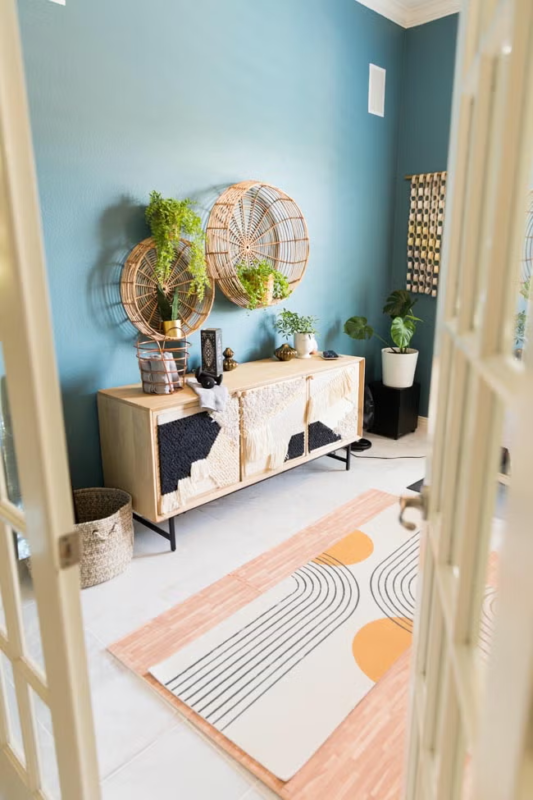
If space allows, transform a spare room into a personal yoga studio. Use an energizing yet calming paint color, introduce natural elements like plants, and maintain an open floor plan to allow movement. The result is a space that supports both body and mind.
10. Make the Most of Natural Light
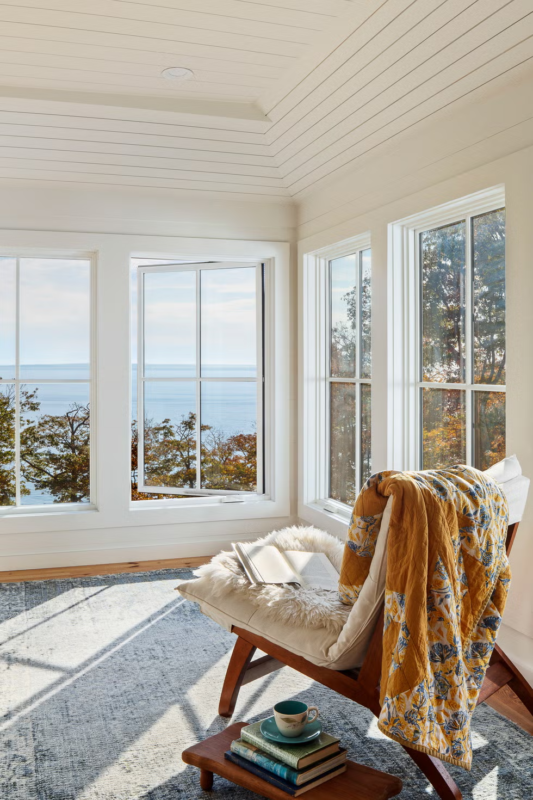
A sunlit room can lift the spirit and improve the quality of your meditation sessions. Large windows or glass doors help bring the outside in, especially when paired with soft seating or a plush rug that invites you to sit, stretch, or reflect.
11. Find Decorations That Feel Zen

Choosing the right decor can enhance the energy of the space. Keep shelves uncluttered but meaningful, showcasing objects like ceramics, natural stones, or peaceful statues. These touches help create a sanctuary that reflects your own path to mindfulness.

